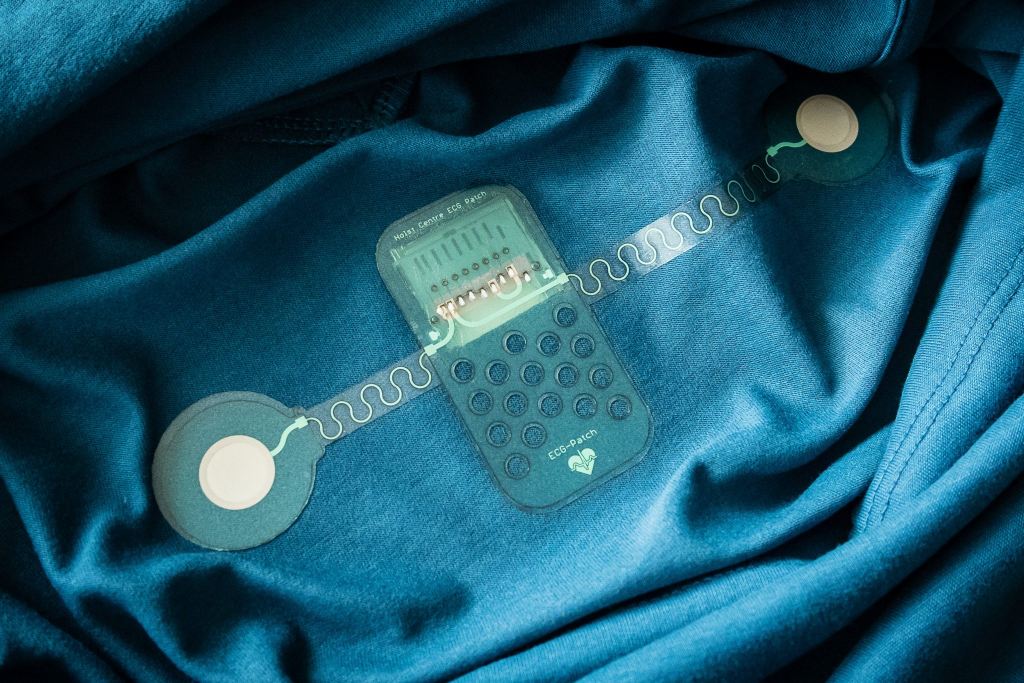
Eindhoven wearables that can help PSV win the next title
PSV has just celebrated the 22nd Dutch Championship, but what can the club do to become champions again next year? e52’s short series explains how Eindhoven’s high tech could take PSV even further. Today: Holst Centre
“We could test it with PSV. No, we just have to.” Ruben de Francisco is holding a shirt in his hand which has a sensor woven into the chest with an exterior connecting piece for an SD card. “Look, in the finished product this will be neatly tucked away, but it already works the way it should. Just bring on PSV.”
 The goal of the shirt – and of the other wearables that De Francisco is helping to develop – is to generate and analyse real time data about the mental and physical condition of the players to then create usable information. Preferably in the middle of a match. The products that De Francisco is developing with his team are used together to continuously show a player’s state, so that the coach can make decisions that will help win the match, for example. “Our goal is to raise performances and prevent injuries.”
The goal of the shirt – and of the other wearables that De Francisco is helping to develop – is to generate and analyse real time data about the mental and physical condition of the players to then create usable information. Preferably in the middle of a match. The products that De Francisco is developing with his team are used together to continuously show a player’s state, so that the coach can make decisions that will help win the match, for example. “Our goal is to raise performances and prevent injuries.”
Ruben de Francisco works for the Holst Centre , located on the High Tech Campus, developing “smart garments”, made from clever textiles. Sensors that had previously been worn on the skin or incorporated into complicated headgear are now fitted directly onto shirts, headbands and wristbands, footwear – everything that an athlete already wears. And without any reduction in user-friendliness, he assures. Holst is a non-profit institute with a focus on research that forms partnerships with technological companies, such as Philips, to achieve real product development.
Comfort and quality
De Francisco reaches for an infographic to illustrate his goals: with two axis, it shows that quality often suffers from an awkward design – and, conversely, that comfort quickly impairs quality. “We’ve solved that. We’re not after fun gadgets that don’t offer enough for professional use. Instead we want the highest level of reliability which can still be worn. Others focus on those gadgets, which are fun, just far from reliable. But, well, we come from the semiconductor industry, that gives us a head start. We don’t just put the pieces together, we make or improve on all of those individual pieces as well.”
The physical data shows exactly what you might expect: heart rate, blood pressure, oxygen uptake, those sorts of things. The mental data is a whole other story. That concerns the extent to which someone can concentrate. “A good example of this would be an archer, who has to be extremely calm and focused if he wants to make the shot,” says De Francisco. “Neuro-feedback could help him determine when he has reached that state. By linking the performance (whether or not it is a good shot) to the mental state at that moment, we can ascertain, on a very individual basis, the best moment to shoot. The machine gradually gains a better understanding of what the relevant factors are and so it can continuously give better results. You can imagine that something like this could work for a football player who has to take a penalty.”
Machine washable
Moving away from “classic” sensors and on to the wearables that Holst now produces wasn’t all that simple. “Why? Well, the looser the sensor on the body, the more powerful the machine has to be to read the body’s signals. Not only that, but the material has to be stretchy and – very importantly – machine washable. We’re still working with quite tight shirts, but soon that will no longer be the case. We’re not yet fully developed.”
Data that is generated from sensors on the body are already in use in top American sports. But there is still a lot of resistance in most major sports. Even FIFA remains unconvinced that this can help take sports further and still prohibits its use in official tournaments.
PSV
Back to PSV. De Francisco and his team have already fully tested the system on athletes of different calibres, among other activities, thanks to the support of Maastricht University. But he would prefer to put it to the test on an elite team. “Only then is it really clear how this system can help the trainer make his decisions.” Could Philip Cocu end up being replaced by a Holst machine? “No, no, that’s not the idea at all. The machine provides perfect data, on the basis of which the trainer can make better decisions. Software can’t make any decisions, but it can provide the data that is actionable. So it’s ideal. At least, it will be if FIFA ever allows it.”
Read other articles on the PSV champion’s celebration HERE .



